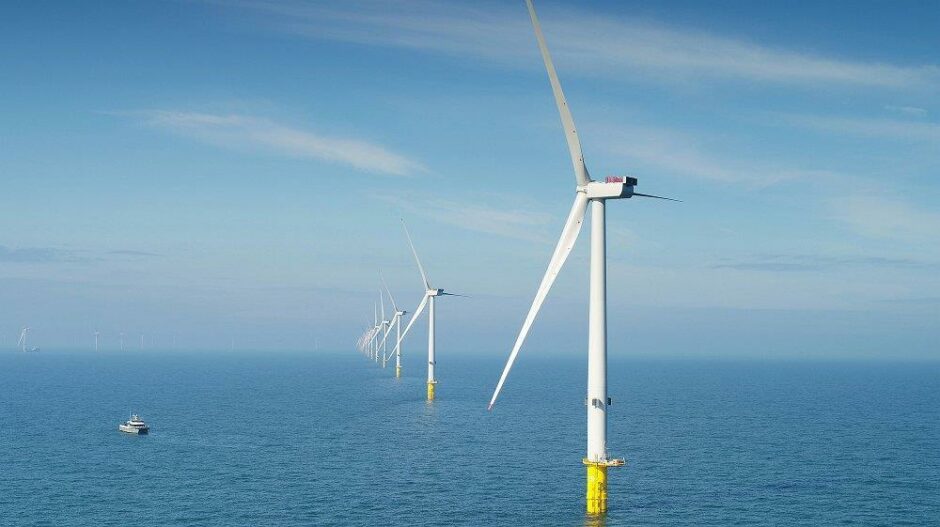
A Mitsubishi-led consortium has dominated Japan’s first-ever fixed-bottom offshore wind auction with record-low prices. The results surprised the industry, but European know-how will still be needed to make the nascent sector a success in Japan.
The markets were surprised that the award was so one-sided, said Alexander Dobrowen Flotre, vice president, offshore wind, at consultancy Rystad Energy.
Still, “it is not uncommon to see some favouring of domestic players, and as such Mitsubishi’s success was somewhat expected. However, given the broad interest from international players, including big companies such as Orsted, RWE and others, the expectation was that some of these could win something here,” Flotre told Energy Voice.
Yuriy Humber, president of the Tokyo-based Yuri Group, a research firm, and founder of the Japan NRG platform, which publishes energy reports, said “the surprise was not so much that it was Mitsubishi Corporation, but that the consortia members were almost entirely the same across all three projects. It appeared as if the three bids were a bundle deal, despite spanning two different parts of the country. But, the biggest surprise of all was the price. Very few people expected a winning bid at ¥11.99/ kWh. The general expectation was for something in the early to mid ¥20s.”
“Several rivals said they were astonished by how low the Mitsubishi group’s bids were, and that this kind of price level would require them to re-think their business model for future tenders. Clearly, Mitsubishi had worked out several ways to offer lower prices. One of those was to contract the same turbines, reducing cost by ordering 1.7 GW in bulk. The corporate PPAs are also said to have played a big role, and that’s likely why we see the same three partners (Amazon, Kirin and NTT) named in each of the winning bids,” Humber told Energy Voice.
“Importantly, Mitsubishi already has a relationship with Amazon having struck a deal at the end of last year to build about 450 solar farms nationwide to secure a source of green electricity,” he added.
Significantly, GE will provide all the turbines to the Mitsubishi-led consortium.
“My understanding is that GE is still in the process of establishing a manufacturing hub in Japan in partnership with Toshiba. The fact that Toshiba is involved is definitely a plus from the Ministry of Economy Trade and Industry’s (METI’s) point of view. This helps kick start the process of developing a local supply chain for the wind industry, which is part of the government strategy to reduce the cost of offshore wind power,” said Humber.
“There’s also perhaps the feeling that it would be simpler to run the first few projects through the same set of people, ironing out the kinks as one team rather than splitting local and national government resources across many disparate consortia,” noted Humber.
In Japan, Mitsubishi is seen as a top brand, one of the leading energy suppliers to the resource-short nation, and possibly it was Mitsubishi’s more international profile – including ownership of European firms that specialise in renewables, in power trading, and so on – that played a role in their win over other domestic companies, added Humber.
Mitsubishi also has some experience from European offshore wind, through its ownership in Eneco and minority ownership shares in various projects in the Netherlands and Belgium.
Foreign offshore wind developers still welcome
Humber does not believe that Mitsubishi’s dominance of the auction will close the door to non-Japanese developers. “They will definitely have a role to play in other auctions. And, as mentioned, Mitsubishi’s strength comes from its overseas assets. For example, the Irish power trading firm ElectroRoute.”
“Likewise, foreign investment will also be welcome. But, with such a crowded field and an expected slow start, it will take time for everyone who wants to be involved to be able to do so. Don’t forget that for now the auctions have focused mostly on the Akita area. I would expect the players to change as other regions come into play,” he said.
And there is still plenty of scope for European know-how. “Clearly, this is a new industry for Japan and there is a need to hire the best talent and source the best equipment, software, business models and so forth. Which means, turning to the places and people who have what’s required. Europe is definitely one of the leaders in offshore wind development, so I am sure that over time we’ll see several firms from there get involved in Japan,” added Humber.
“Another factor to keep in mind is that dealing in offshore developments, there is an element of national security involved. But Europe is a close ally of Japan, so it bodes well for future cooperation,” he said.
For future auctions, Rystad also expects international developers to be successful, considering the ambitious offshore wind targets set out by Japanese government. “There are still vast amounts of capacity that needs to be awarded to reach the 10 GW target by 2030, and even more for the 30-45 GW target by 2040. As such, Japan likely needs international players to contribute to the growth, but can implement local content rules, much like we have seen in Taiwan, to secure growth in the domestic supply chain,” said Flotre.
Recommended for you

